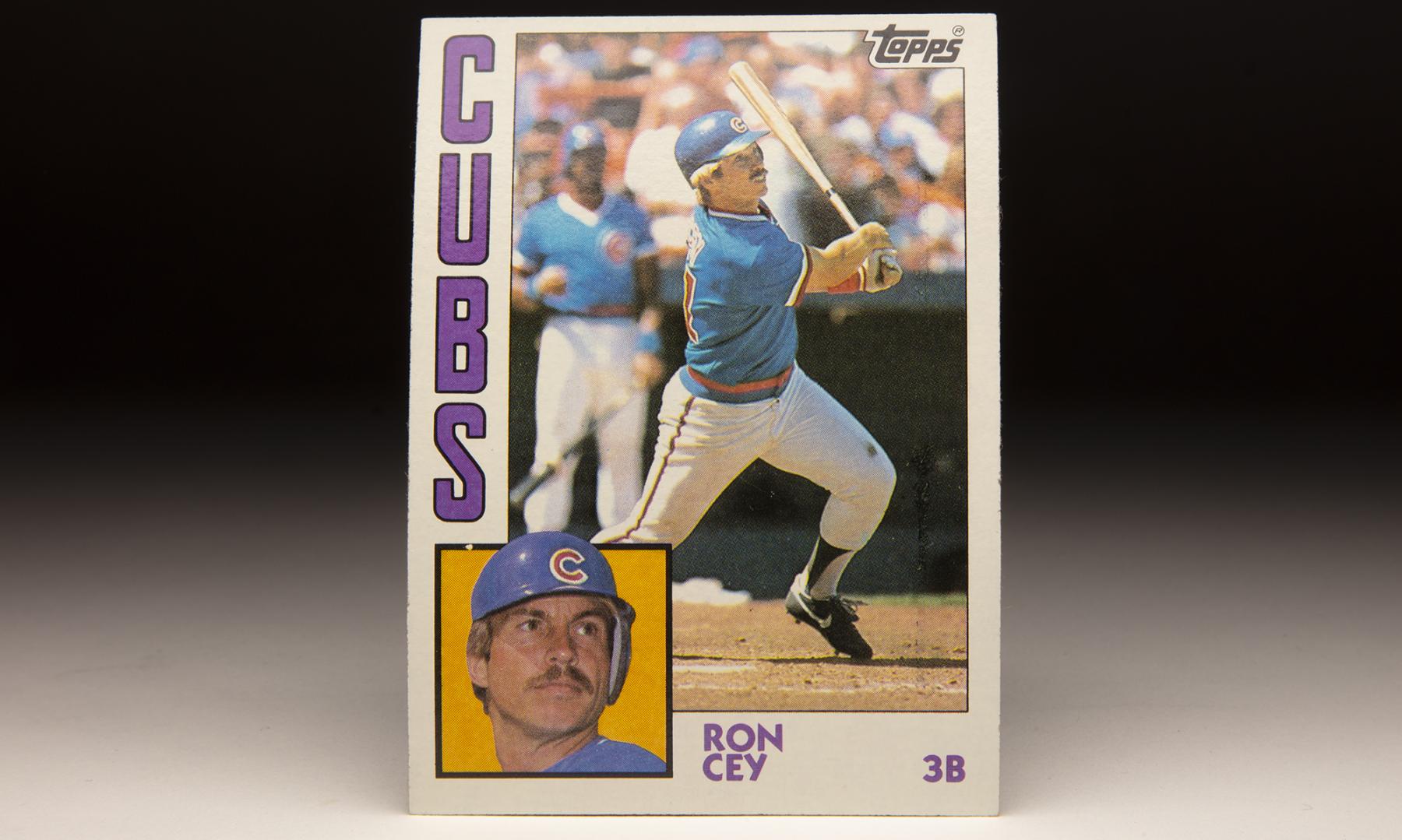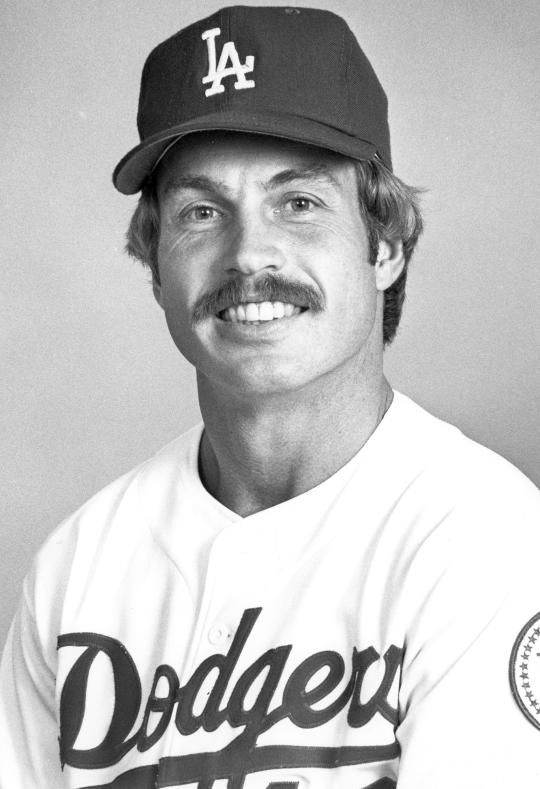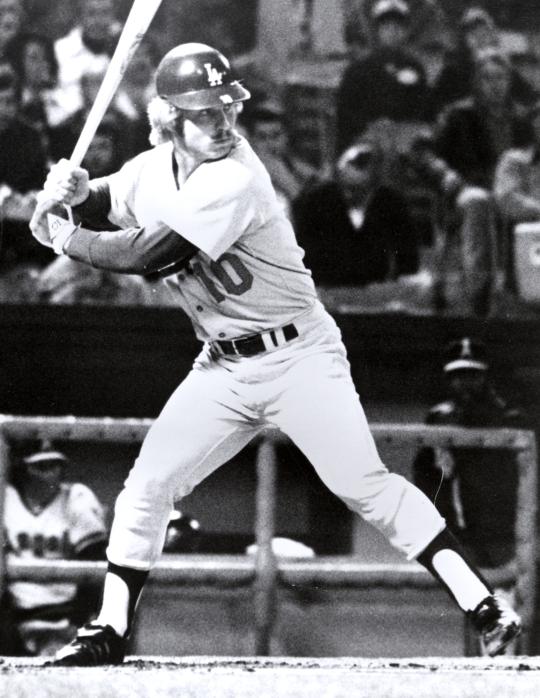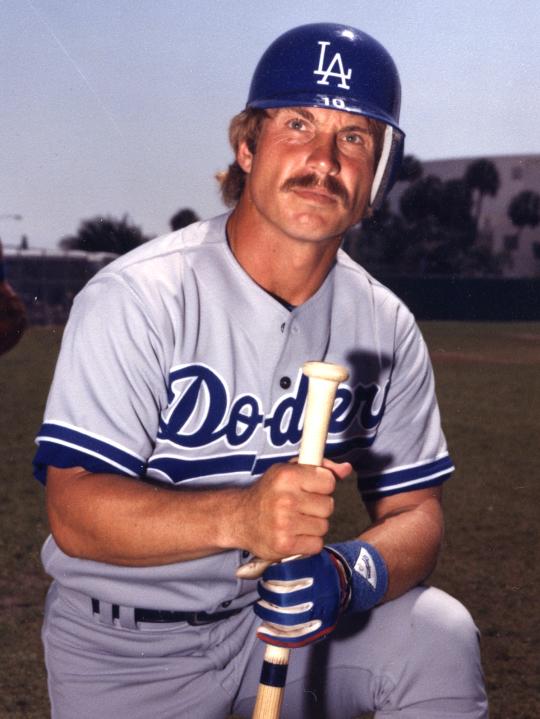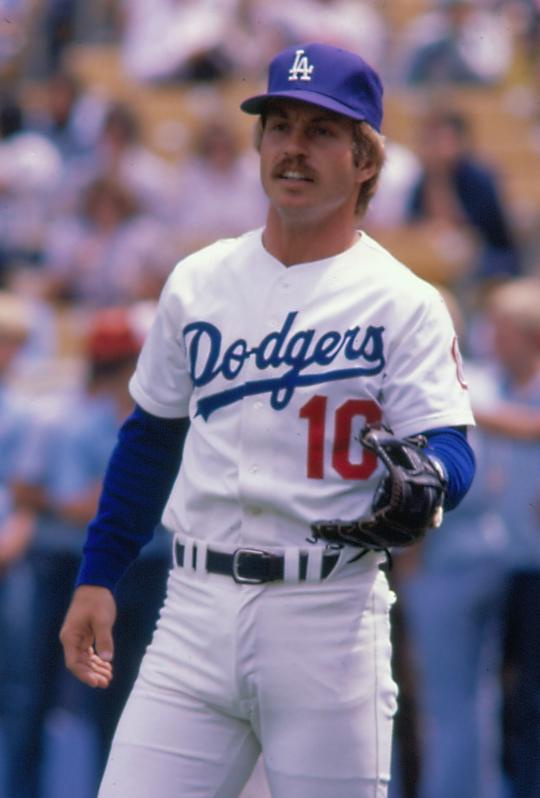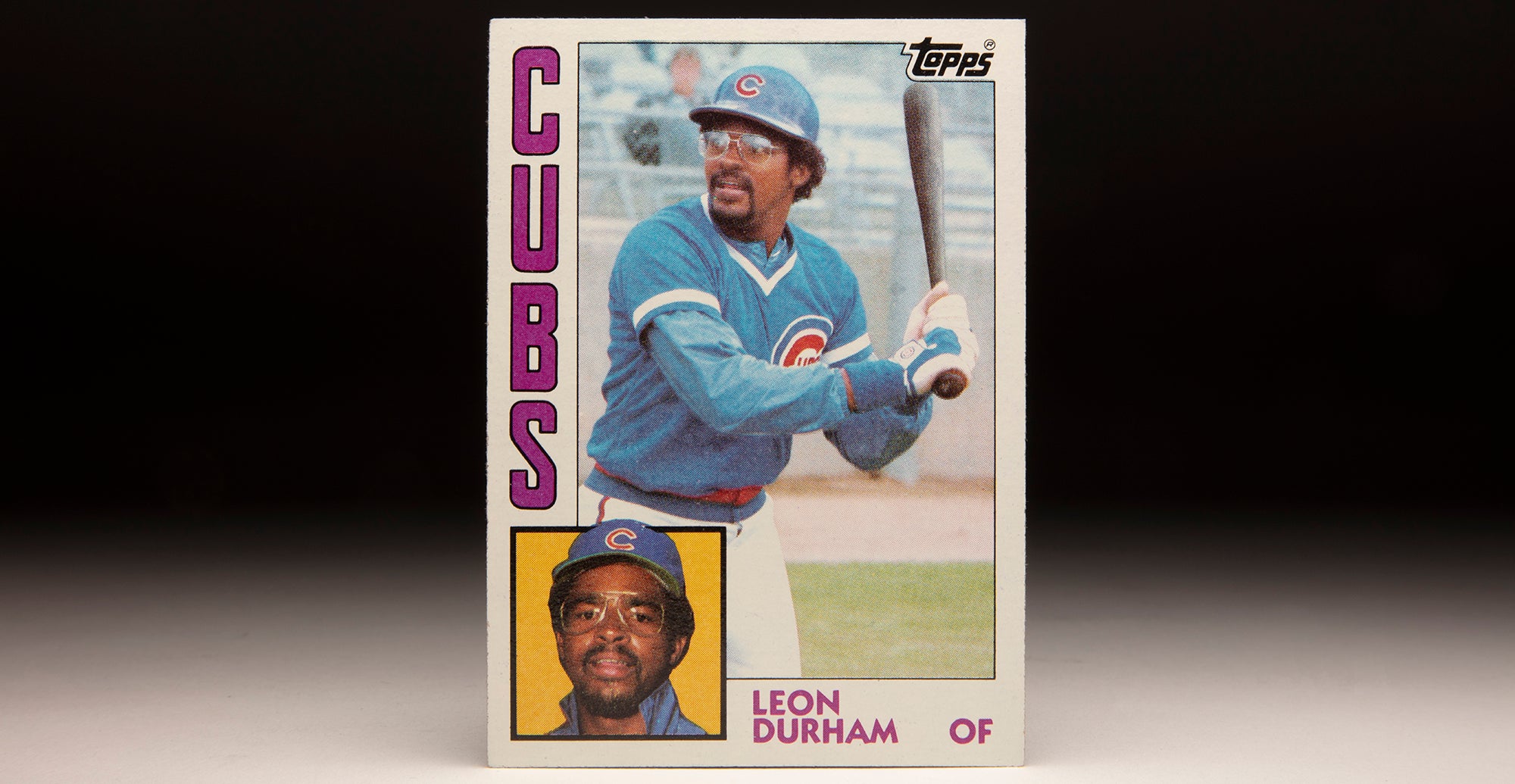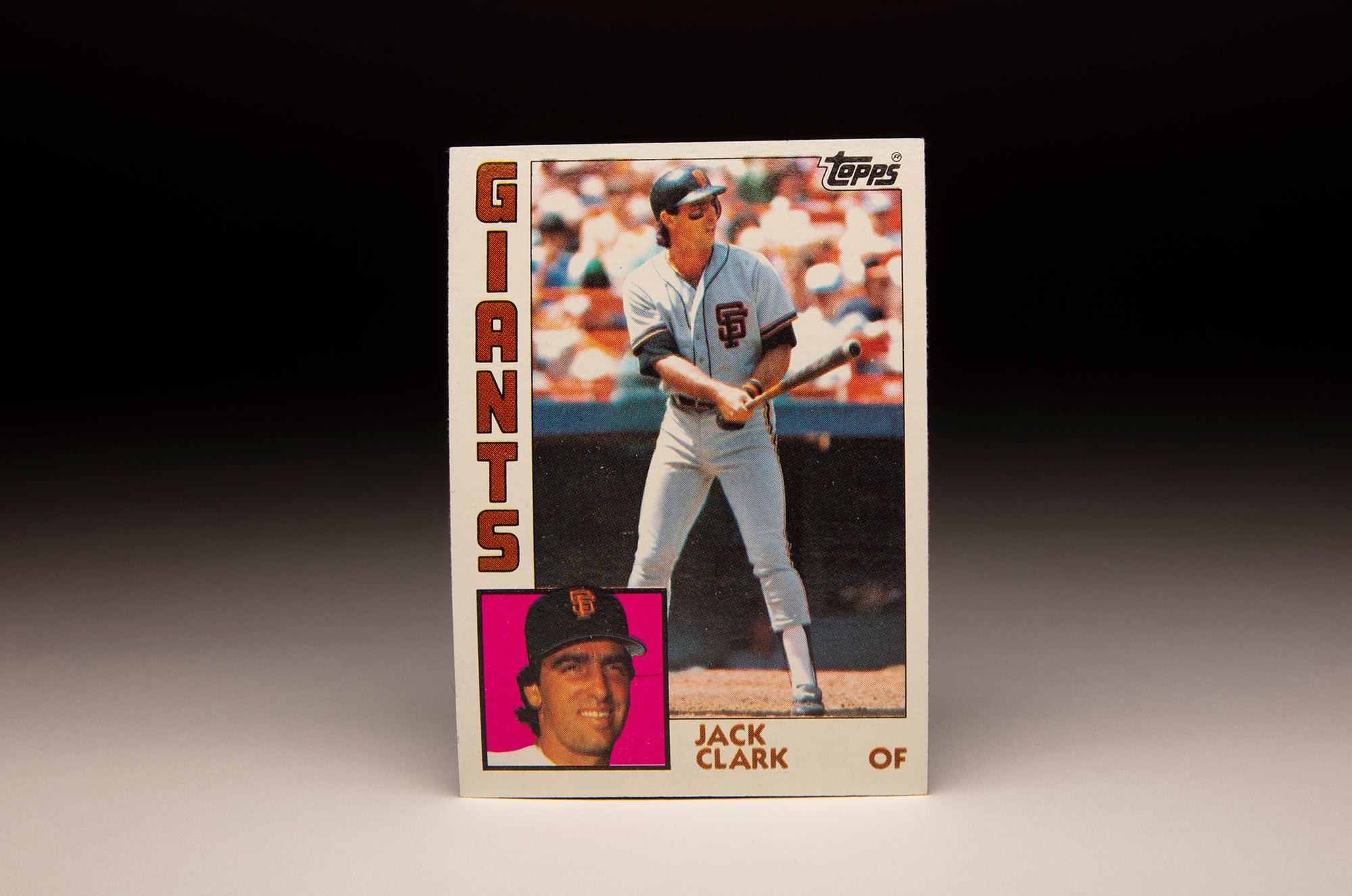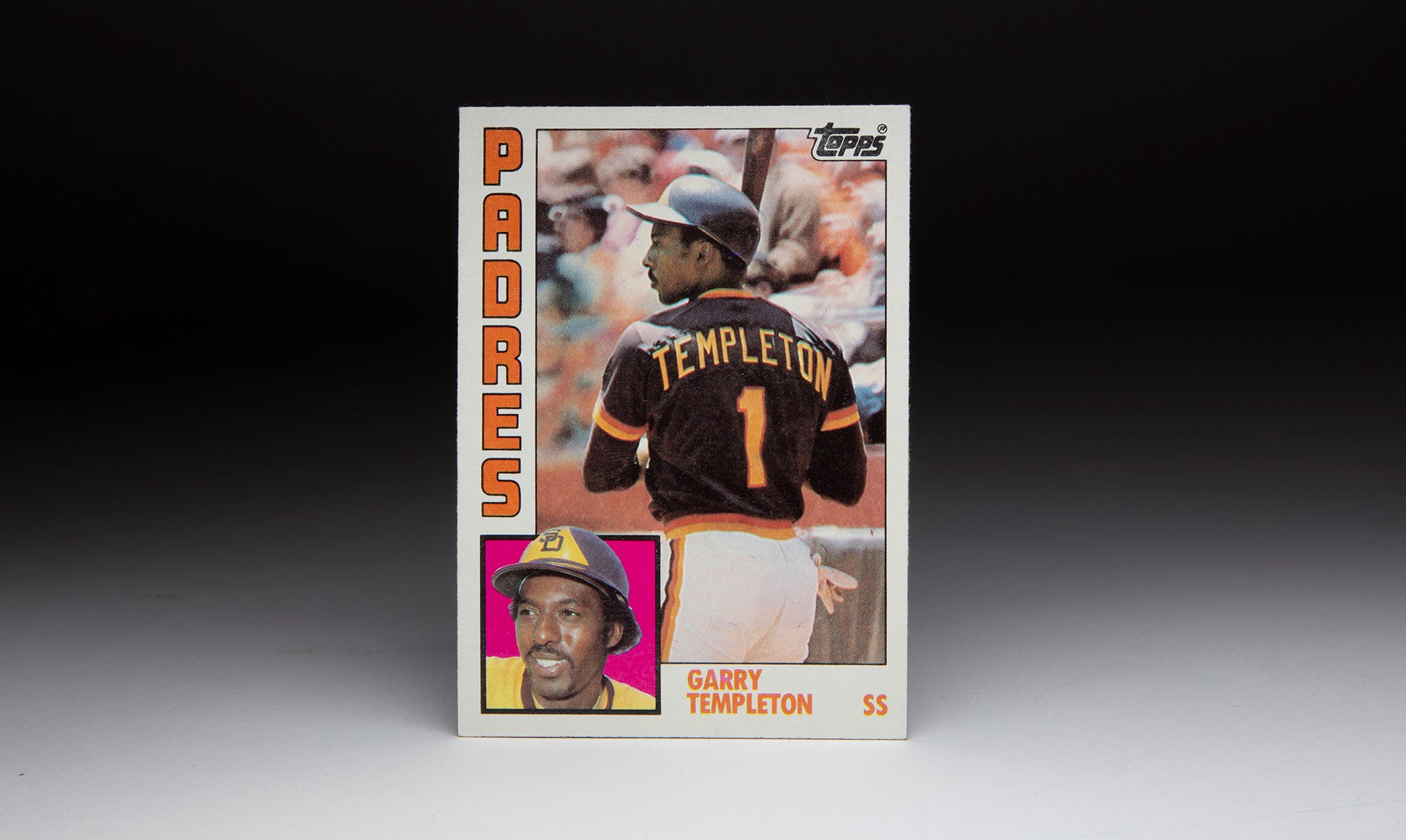- Home
- Our Stories
- #CardCorner: 1984 Topps Ron Cey
#CardCorner: 1984 Topps Ron Cey
When Ron Cey played his last big league game in 1987, only five third basemen in history had topped his total of 316 home runs.
Cey is also one of just 18 players in history with 2,000-or-more games played and fewer than 25 stolen bases.
But the player known as “The Penguin” for his waddling running style overcame his lack of speed to fashion one of the best careers any third sacker has ever compiled.
Be A Part of Something Greater
There are a few ways our supporters stay involved, from membership and mission support to golf and donor experiences. The greatest moments in baseball history can’t be preserved without your help. Join us today.
Born Feb. 15, 1948, in Tacoma, Wash., Cey knew from an early age that a pro sports career was his destiny – even though his stocky build, which would top out at 5-foot-10 and 185 pounds in the big leagues – would always limit his footspeed.
“As an 8-year-old, I was involved in athletics at the South End Boys’ Club, keeping off the streets and out of trouble,” Cey told the Tacoma News Tribune in 1978 when he was honored by his alma mater, Mount Tahoma High School. “Millions of other children have a dream that someday they will become a Major League Baseball player. I always wanted to be one.
“Many people have asked me what I would do if I wasn’t playing baseball. There was no other choice. That was it. Football and basketball eliminated themselves. It was only baseball.”
Cey starred in all three sports in high school when he wasn’t working at his father’s service station on the Pacific Highway Southwest in Tacoma, pumping gas and washing windshields.
Selected by the Mets in the 19th round of the 1966 MLB Draft after graduating from Mount Tahoma High School, Cey opted instead to play baseball for Washington State University.
“(I) chose WSU because of its baseball reputation and coach (Bobo Brayton) and small-town atmosphere where I could be around my friends,” said Cey, who received his Penguin nickname from Brayton. “After my sophomore season, I knew I would be drafted again. When the Dodgers drafted me, Bobo told me: ‘Give me one more year to refine your fundamentals.’ I told Bobo: ‘Look, it’s my call.’
“I was ready to become a pro.”
The Dodgers took Cey in the third round of the 1968 June Secondary draft for collegiate players, and Cey was soon on his way to the Tri-City Atoms of Kennewick, Wash., in the Northwest League. Cey hit .299 with nine homers and 62 RBI in 74 games that season then began the 1969 campaign at Class A Bakersfield, where he hit .331 in 98 games before earning a promotion to Double-A Albuquerque. The Dodgers sent Cey to the Arizona Instructional League after the season and then back to Albuquerque in 1970, where he hit .331 in 71 games during a season where he fulfilled commitments to the U.S. Army Reserve.
In 1971, the Dodgers assigned Cey to Triple-A Spokane, where he hit .328 and set team records for home runs (32) and RBI (123). It marked the most RBI in the Pacific Coast League in its modern era, which began in 1958 when the league shortened its schedule to fewer than 160 games.
The Dodgers rewarded Cey with a September call-up, and he made pinch-hitting appearances on Sept. 3 and 5, striking out both times.
Cey earned an invitation to Dodgers camp in Spring Training in 1972 but was sent back to Albuquerque – which had become the Dodgers’ Triple-A team that year – well before camp ended as the team was committed to top prospect Steve Garvey at third base.
The move did not sit well with Cey. But Spokane manager Tommy Lasorda buoyed Cey’s confidence.
“It’s just a matter of time for Cey,” Lasorda told the Tacoma News Tribune in the spring of 1972. “He’s going to be an outstanding player in the major leagues. Cey is going to get his chance someplace.”
Cey put together another monster PCL season in 1972, hitting .329 with 23 homers, 109 RBI and 117 walks in 142 games. He played in 17 games for the Dodgers that fall, hitting .270 with a homer, three RBI and seven walks in 11 games.
In 1973, Cey made the Dodgers’ Opening Day roster. By the sixth game of the season, he was the team’s starting third baseman – and soon put a stop to the revolving door at third base for Los Angeles, which had used 45 players at third since moving to the West Coast just 15 years prior. Cey would finish sixth in the National League Rookie of the Year voting that year after hitting .245 with 15 homers and 80 RBI in 152 games while leading NL third basemen in assists with 328. That same season, the Dodgers moved Bill Buckner to the outfield in July to make room for Garvey at first base. That cemented an infield of Davey Lopes at second base, Bill Russell at shortstop, Cey at third and Garvey at first that would endure through 1981.
Cey attributed much of his success – and the success of other young Dodgers – to Lasorda.
“(Lasorda) has been the most influential man as far as my career is concerned at this point,” Cey told the Tacoma News Tribune. “Tom has always been in my corner, and that’s true of other players in the system. There were several of us who took three or four years to make it to the top – and we made it together.”
In 1974, Lasorda was on the Dodgers coaching staff under manager Walter Alston, and Los Angeles won 102 games to advance to the postseason for the first time since 1966. Cey hit .262 with 18 homers and 97 RBI while batting out of the No. 6 hole most of the time. He was named to the first of six straight NL All-Star Games that year, earning a spot in the starting lineup.
“The steam went out of the Big Red Machine,” Cey said when the Dodgers held off the two-time defending division champion Cincinnati Reds to win the NL West.
In the NLCS vs. the Pirates, Cey hit .313, going 4-for-5 in Game 2 and scoring what proved to be the winning run in the top of the eighth inning after doubling to lead off the frame.
“This is a terrific club,” Cey told United Press International about his team after Game 2.
But after dispatching the Pirates in four games, the Dodgers fell to the Athletics in five games in the World Series as Cey went 3-for-17 (.176) at the plate with no extra base hits.
Still, the future seemed bright for Los Angeles with their young infield and a deep pitching staff led by Don Sutton, Andy Messersmith and Mike Marshall. But the next few seasons would prove challenging thanks to two old nemeses: The Reds and the Yankees.
Cey continued his ascendant play in 1975, leading the Dodgers with 25 homers and 101 RBI while hitting .283 with a .372 on-base percentage. He once again started the All-Star Game at third base for the National League – but Los Angeles slipped to second in the NL West behind the Reds.
The 1976 season saw Cey put up similar numbers (23 homers, 80 RBI, .386 OBP) but the Dodgers once again finished second to the Reds, who won their second straight World Series title. Alston resigned as manager near the end of the season, and the Dodgers quickly named Lasorda as his successor.
Inspired by their new skipper, the Dodgers got off to a hot start in 1977 – and Cey was the fuel that fed the fire. He set a new MLB record with 28 RBI in April (a mark that has since been surpassed) as Los Angeles began the season 22-4. Lasorda moved Cey into the cleanup spot in the lineup that year, providing protection for Garvey while affording Cey plenty of chances for RBI. He would post career-bests with 30 home runs and 110 RBI that year and finished eighth – another career high – in the NL MVP voting.
Cey – regularly lauded as one of the best conditioned players in the big leagues, with a reported body fat percentage of 5.0 – started his third All-Star Game in four seasons as Los Angeles won the NL West by 10 games over the Reds. The Dodgers again advance to the World Series, this time beating the Phillies, as Cey hit .308 with a homer and four RBI – all coming in Game 1 on one swing as he hit a grand slam off Steve Carlton.
But Cey could only muster a .190 average in the World Series as the Yankees took the title in six games. In Game 4, with the Yankees leading the series 2-games-to-1 and the game 3-2, Cey was robbed of a home run at the Dodger Stadium fence by Yankees left fielder Lou Piniella, who coyly hid the ball in his glove after the catch, causing Cey to wonder if the ball had been caught or not.
Many saw it as a turning point.
“I was thinking: ‘I finally caught one…right square in the pocket,” Piniella, who was not known for his fielding, told the Boston Globe. “I had that good feeling and wanted to wait a while before I threw the ball in.”
The 1978 season saw a virtual repeat of ’77 as the Dodgers won the NL West, defeated Philadelphia in the NLCS and then fell to the Yankees in six games in the World Series. Cey hit .270 that year with 23 homers and 84 RBI – but three World Series losses in five seasons had begun to take its toll.
In 1979, the Dodgers posted their first losing season since 1968. Cey, however, kept up his stellar all-around play by batting .281 with 28 homers and 81 RBI while posting a career-best .389 on-base percentage. In the field, Cey tied a full-season NL record by committing just nine errors at third base, leading the league with a .977 fielding percentage.
“The record means a lot to me,” Cey told the Los Angeles Times.
The Dodgers bounced back in 1980, finishing the regular season tied with the Astros to force a one-game playoff. Cey, who was dropped to the sixth spot in the batting order for most of the year, hit a two-run homer in the bottom of the eighth inning off Houston’s Frank LaCorte in the final scheduled game of the season to turn a 3-2 Houston lead into a 4-3 Dodgers win that left both teams at 92-70.
“It seems like all our games go down to the wire,” Cey told Gannett News Service after his home run. “The so-called Hollywood atmosphere is here. You couldn’t write a better script.”
But during the at-bat against LaCorte, Cey fouled a ball off his left ankle. The painful bruise – combined with a right hamstring pull that required taping before every contest – left Cey unable to play in the playoff game. Houston won 7-1, ending the Dodgers season.
In 1981, however, it was finally the Dodgers’ time. Led by Rookie of the Year and NL Cy Young Award winner Fernando Valenzuela, Los Angeles won the first half NL West title, beat the Astros in the NLDS (Cey did not play after suffering a broken left arm when he was hit by a pitch Sept. 8) and then dispatched Montreal in the NLCS (Cey returned for that series and hit .278 with three RBI).
The World Series featured another rematch with the Yankees, but this time Cey hit .350 with a homer and six RBI. His three-run homer in the first inning of Game 3 – with the Dodgers trailing the series 2-games-to-none – gave Los Angeles an early lead, and Cey scored the eventual winning run on a double play grounder by Mike Scioscia in the fifth inning as the Dodgers won 5-4. Cey had two more RBI in Game 4 and another in Game 6 as the Dodgers won four straight to capture their elusive title.
That he even played in Game 6 was mind-boggling as Cey was hit in the head by a pitch from the Yankees Goose Gossage in the eighth inning of Game 5, knocking him from the game. Cey stayed in Los Angeles in the hospital for tests after Game 5 while his teammates flew to New York but rejoined the Dodgers the next day after he was cleared to play.
The earflap on Cey’s helmet likely saved him from serious injury, and soon MLB would institute a rule stating that all batters (except those who played before the rule was enacted) would have to wear at least one earflap on their helmet.
Cey shared 1981 World Series MVP honors with teammate Pedro Guerrero and Steve Yeager.
The World Series win marked the end of the Cey-Russell-Lopes-Garvey infield as Lopes was traded to the Athletics on Feb. 8, 1982, to open a spot for touted youngster Steve Sax. Now 34, Cey hit .254 with 24 homers and 79 RBI that year but the Dodgers failed to repeat at NL West champions.
Usually cordial but not effusive with the media, Cey maintained an even-keel approach throughout his career – no matter the Dodgers’ record.
“I am the way I am,” Cey told the Los Angeles Times. “I don’t bother anybody and nobody bothers me. I have a job to do and I’m paid well to do it.”
But with the Dodgers looking to move Guerrero to third base to open up spots in the outfield, Cey’s time in Los Angeles was at an end. On Jan. 19 1983, Cey was traded to the Cubs in exchange for Vance Lovelace and a minor leaguer. He had one more year on his contract that was worth $390,000, but the Cubs tore that up and gave him a five-year deal worth a reported $4.75 million.
Cey’s bat was slowing but he was still solid at the plate in 1983, hitting .275 with 24 homers and 90 RBI. Then in 1984, the Cubs advanced to the postseason for the first time since 1945 by winning the NL East. Cey hit .240 with 25 homers and 97 RBI then homered in Game 1 of the NLCS vs. the Padres in Chicago’s 13-0 win. His third inning double in Game 2 gave the Cubs a 2-0 lead that would turn into a 4-2 win, but Cey had only one hit the rest of the series as the Padres rallied to win in five games – with Cey’s old teammate, Steve Garvey, hitting a walk-off home run in Game 4.
Cey remained the Cubs’ regular third baseman in 1985 but saw his batting average fall to .232 to go along with 22 homers and 63 RBI.
“Three years ago, I was supposedly too old for the Dodgers,” Cey told the Los Angeles Times in the spring of 1986. “I proved I wasn’t too old then, just like I’ll prove I’m not too old now.”
But Cey appeared in just 97 games in 1986, hitting .273. The Cubs informed Cey at the end of the season that they would not bring him back in 1987, and on Jan. 30 he was traded to the Athletics for Luis Quinones.
After hitting .221 over 45 games, the A’s released Cey on July 15, 1987, ending his career.
“Baseball’s been my life for 31 years,” Cey told McClatchy News Service after he was let go. “Now I can get on with the second half of my life if nothing happens in the next couple of weeks.”
When nothing did, Cey walked away from the game with a .261 batting average, 1,868 hits, 1,012 walks, 328 doubles, 316 home runs and 1,139 RBI. No Los Angeles Dodger has ever played more games at third base, and Cey’s 766 walks are tops in L.A. Dodgers history.
Cey is one of only 11 third basemen in history with at least 1,900 games played and a career WAR of better than 50.0.
“I worked hard, I was dedicated and I was willing to sacrifice,” Cey said in 1978. “I had the willpower to succeed against adversity.”
Craig Muder is the director of communications at the National Baseball Hall of Fame and Museum

